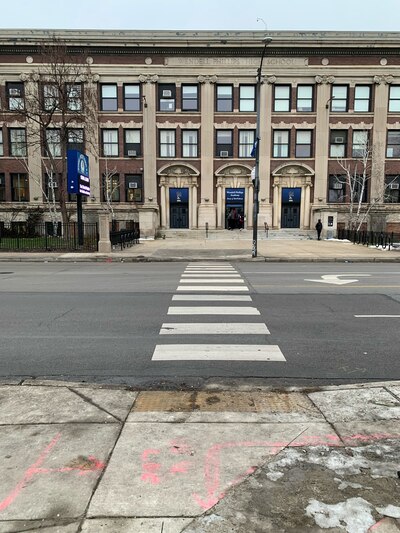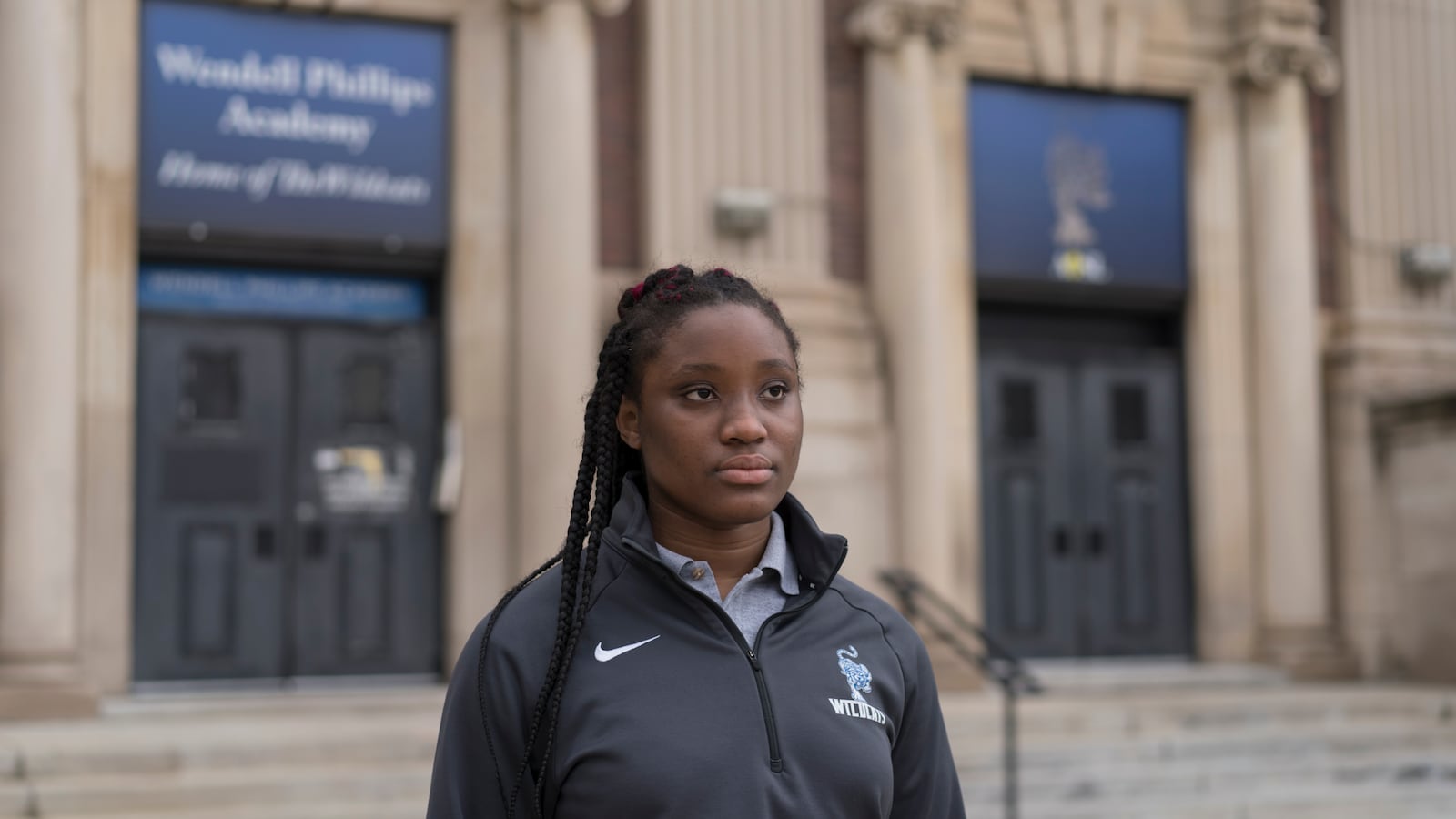When I say I attend Wendell Phillips, a public high school in Chicago’s Bronzeville neighborhood, people who know me as quiet and studious are often surprised. They ask me why, out of all the high schools in Chicago, did I choose Phillips?
When I tell people that I go to Phillips, they often make untrue or unkind assumptions: That I’m not smart or goal-oriented, that I’m obsessed with sports, especially football, and that I couldn’t have gotten into a “better” high school.
But I’m proud to go to Phillips, even if I didn’t exactly choose it.
I moved to the U.S. from Nigeria in middle school, enrolling in school just two months before eighth grade graduation. I missed the standardized tests that more competitive high schools used to screen students. My elementary school counselor told me that the only school that would accept me is Phillips.
I enrolled there and have never regretted it.
Named for an abolitionist and an advocate for Native American rights, Wendell Phillips Academy High School was founded in 1904, and it would later become Chicago’s first predominantly Black public high school. Today, Phillips students are almost all Black and from low-income families.
At around 56%, the school’s four-year graduation rate is significantly below the city and state averages. That’s probably because so many of its students don’t have what they need to do well. The school doesn’t have enough teachers, mental health professionals, or after-school activities to support its students. There’s just one psychologist to serve the school’s more than 500 students.
Phillips students are required to pass through metal detectors, which occasionally pick up security risks, but more often make students late for class. Fights on school grounds are common. The security situation hit a low point this school year when a 14-year-old student and a security guard were shot right outside the school building.
You may read this and think Phillips is a “bad” school, but it’s not. It’s filled with intelligent teens who aim to do great things and positively impact their communities. Teachers and counselors who care sincerely about their students work there. But Phillips is a school where students and staff often don’t have the resources to do their best work. A lot of it boils down to money.
Inside a school that people often dismiss are bright and unique students who want to make a difference.
The school building is evidence of that. When I was a sophomore, the steps at the building’s main entrance collapsed, and you could see into the basement. The heating and cooling system is antiquated, and classrooms are almost always too hot or too cold. In one of the bathrooms, the ceiling looks about to collapse. There are stalls that don’t lock, broken washbasins, and leaky pipes. Phillips needs a real renovation – not just a patch on its most urgent wound.

Problems with the building are just a part of it. Many Phillips students face challenges including food and housing insecurity. They don’t have Wi-Fi at home. Without the basics, it can be hard for students to focus on their schoolwork. For example, a student I mentor always comes late to school because he needs to care for his sister’s child. That makes him miss his first two classes, which he is failing. He needs more help than he’s getting.
Also, students need after-school jobs. I don’t know what I would have done without paid work. With the money I earned, I helped support my family. Many other students need to earn money for their families, too. But there aren’t enough jobs, and even if there were, we’d need more school staff to connect students with the right opportunities.
And you know what would also help? Giving Phillips students more of a say in how their school works. Yes, we have a student council, but its decisions are limited to things like prom and spirit week. But on issues that affect us most — from dress codes to scheduling to the need for female security guards, in addition to male ones — it feels like our opinions aren’t heard or valued.
But our broken building and the challenges that make daily living and learning so much harder aren’t the only things that define Phillips. The forces that keep a school like Phillips poor and Black, and without the money it needs to fight systemic racism and generational poverty don’t define us either. The challenges are vast and deep, but inside a school that people often dismiss are bright and unique students who want to make a difference.
I want to go to Columbia University, become a doctor, and work to lower maternal mortality rates among Black women. One of my classmates, Damien, a star high school football player, wants to work in real estate so he can build the kind of affordable housing he wishes he had access to growing up. Another Phillips student, Raheema, wants to go to business school and become a role model for the next generation of Black children.
When you think of Phillips, I hope you think of students like Damien, Raheema, and me. I hope you’ll think of the student I tutor. I hope you think of all of the students — those who are college-bound and those who are not on track to earn a diploma. Think of us, who we are becoming, and who we could be if we all had what we needed to thrive.
Ajibola Elizabeth Junaid is a senior at Wendell Phillips Academy High School in Chicago. She is a Student Voices Fellow at Chalkbeat.


